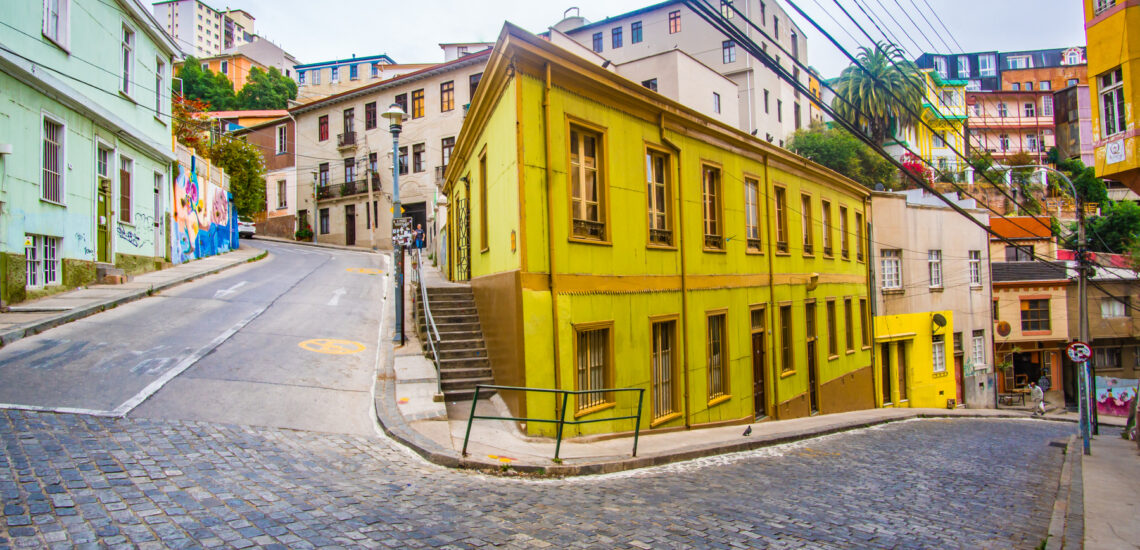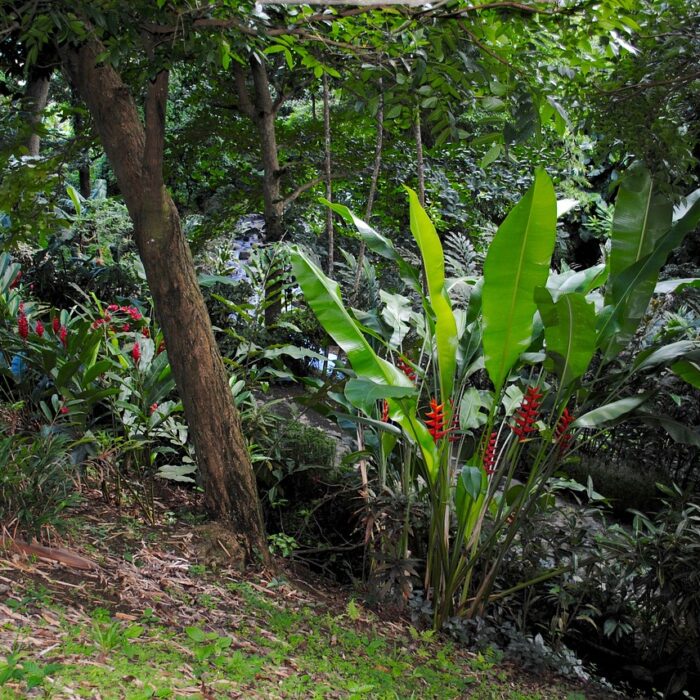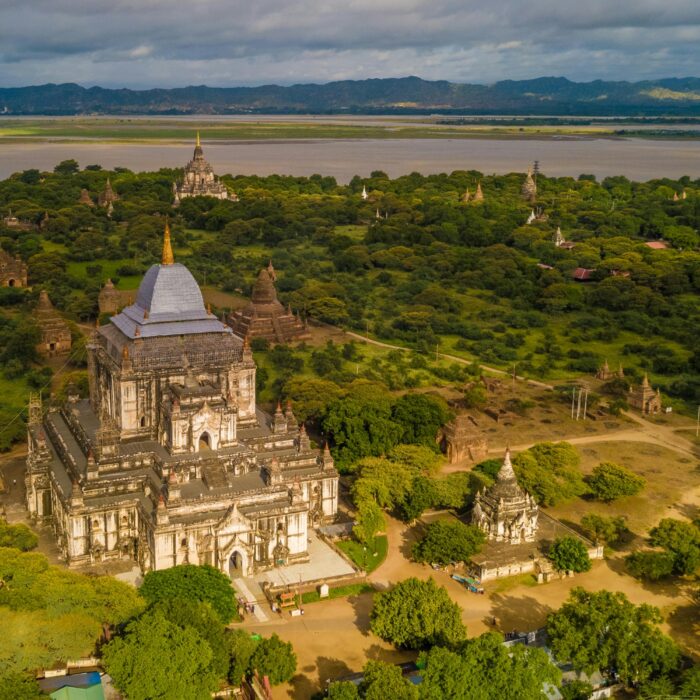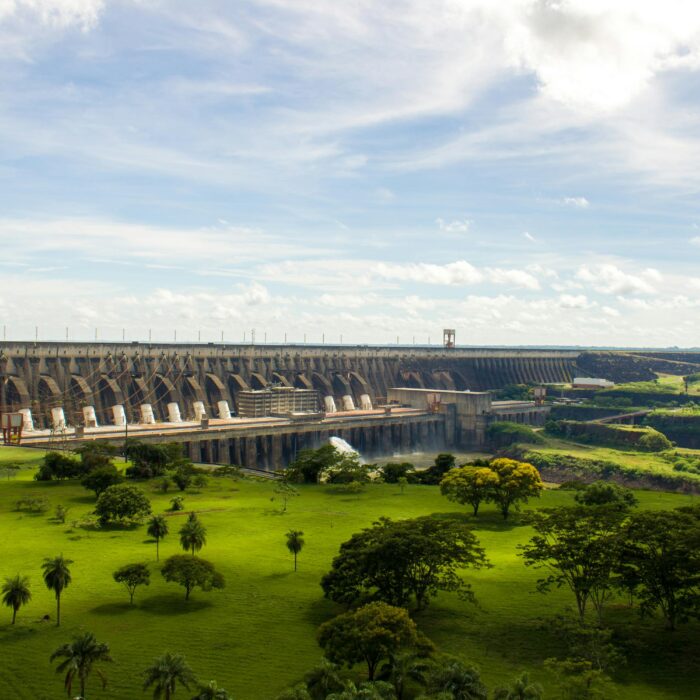Quick facts about Chile:
- Population: Approximately 19 million people.
- Capital: Santiago.
- Official Language: Spanish.
- Currency: Chilean peso (CLP).
- Government: Unitary presidential republic.
- Major Religion: Christianity (predominantly Roman Catholicism).
- Geography: Located in South America, with a long coastline along the Pacific Ocean, bordered by Peru, Bolivia, and Argentina, featuring diverse landscapes including the Atacama Desert, Andes Mountains, and the southern Patagonian region.
Fact 1: Chile is the most elongated country in the world
Chile is the most elongated country in the world, stretching approximately 4,300 kilometers (2,670 miles) from north to south along the western coast of South America. Its narrow width averages only about 177 kilometers (110 miles) from east to west. This unique geographical feature gives Chile a remarkably diverse range of landscapes, including the Atacama Desert in the north, the Andes Mountains along its eastern border, and the rugged coastline and fjords of Patagonia in the south. Chile’s elongated shape is a result of its geographical location, bordered by the Pacific Ocean to the west and the Andes Mountains to the east, creating a striking contrast between its expansive coastline and mountainous interior.
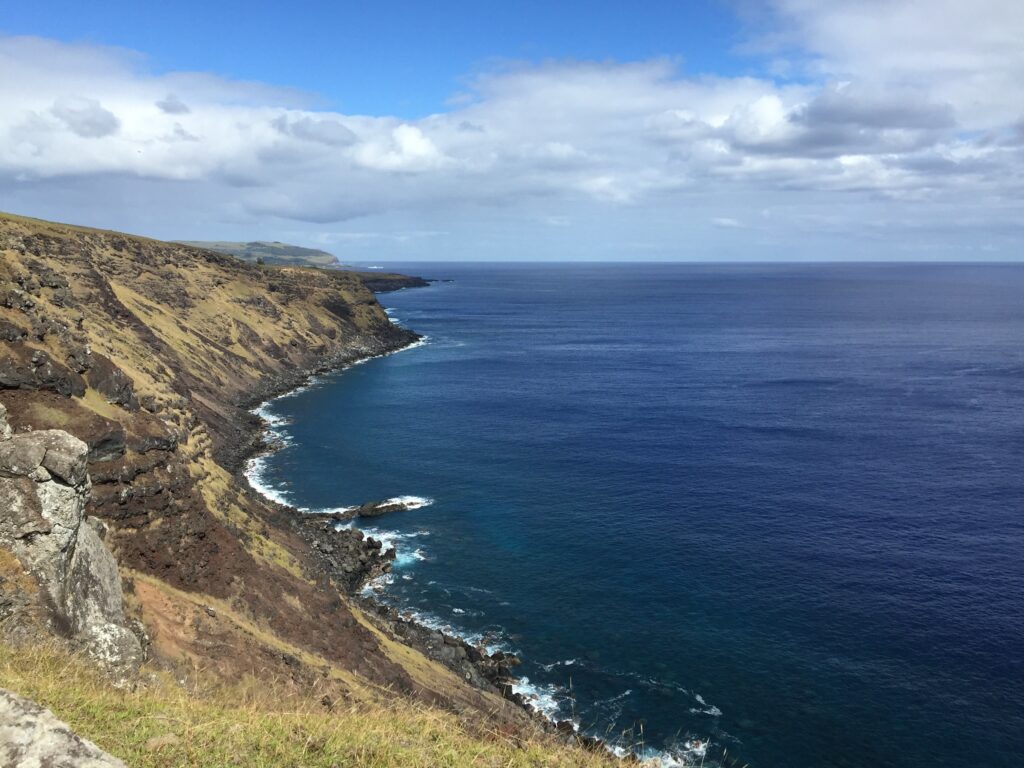
Fact 2: Chile is a major wine producer
Chile is renowned as a major wine producer, with its fertile valleys and favorable climate providing ideal conditions for grape cultivation and winemaking. The country’s wine industry dates back centuries, influenced by Spanish colonial settlers who introduced vineyards and winemaking techniques to the region. Today, Chile is celebrated for its diverse range of high-quality wines, including world-class varietals such as Cabernet Sauvignon, Merlot, Carmenere, and Sauvignon Blanc.
In addition to its rich winemaking tradition, Chile also boasts an old brewing culture that dates back to colonial times. European settlers brought beer-making techniques to Chile, and over the years, the country has developed its own unique brewing heritage. While wine remains a focal point of Chilean gastronomy and culture, the brewing scene has experienced a resurgence in recent years, with a growing number of craft breweries and microbreweries producing artisanal beers inspired by local ingredients and traditions.
Fact 3: In Chile, mountains occupy a substantial part of the country
The backbone of Chile’s geography is the Andes mountain range, which runs along the entire eastern border of the country. The Andes are one of the longest mountain ranges in the world and dominate Chile’s landscape, shaping its climate, topography, and ecosystems.
In addition to the Andes, Chile is home to several other mountain ranges and highland regions, including the Coastal Range (Cordillera de la Costa) in the west and the Central Valley (Valle Central) between the Coastal Range and the Andes. These mountainous areas contribute to Chile’s diverse geography, offering a range of ecosystems, from snow-capped peaks and alpine meadows to arid deserts and fertile valleys.
Chile’s mountains are not only of geological and ecological importance but also play a vital role in the country’s culture, providing opportunities for outdoor recreation, tourism, and adventure sports such as hiking, mountaineering, skiing, and trekking. Additionally, the mountains influence Chile’s climate and water resources, serving as a source of freshwater for agriculture, industry, and human consumption.

Fact 4: The strongest earthquake ever recorded was in Chile
Chile holds the record for the strongest earthquake ever recorded in recorded history. This devastating earthquake, known as the Great Chilean Earthquake or the Valdivia Earthquake, occurred on May 22, 1960. The earthquake had a magnitude of 9.5 on the Richter scale and originated off the coast of south-central Chile, near the city of Valdivia.
The Great Chilean Earthquake unleashed powerful seismic forces that caused widespread destruction across Chile, triggering landslides, tsunamis, and volcanic eruptions. The earthquake and its aftermath resulted in significant loss of life and property damage, with estimates of casualties ranging from thousands to tens of thousands.
Fact 5: Chile is a convenient place for astronomers
Chile is a convenient place for astronomers due to its favorable geographic location, high-altitude observatories, and clear skies, which offer excellent conditions for astronomical observation and research. The northern regions of Chile, particularly the Atacama Desert, are renowned for their exceptionally dry and transparent atmosphere, minimal light pollution, and stable weather conditions, making them ideal locations for astronomical observatories. Some of the world’s most advanced telescopes, including the Atacama Large Millimeter/submillimeter Array (ALMA) and the Very Large Telescope (VLT), are located in Chile’s Atacama Desert.
Also Chile has an organization dedicated to researching unidentified flying objects (UFOs). The Committee for the Study of Anomalous Aerial Phenomena (CEFAA), established by the Chilean Civil Aviation Authority (DGAC), investigates reports of UFO sightings and conducts research to determine the nature of these phenomena. CEFAA operates under the auspices of the Chilean government and collaborates with scientists, astronomers, and experts from various fields to analyze UFO sightings and gather data on unidentified aerial phenomena.
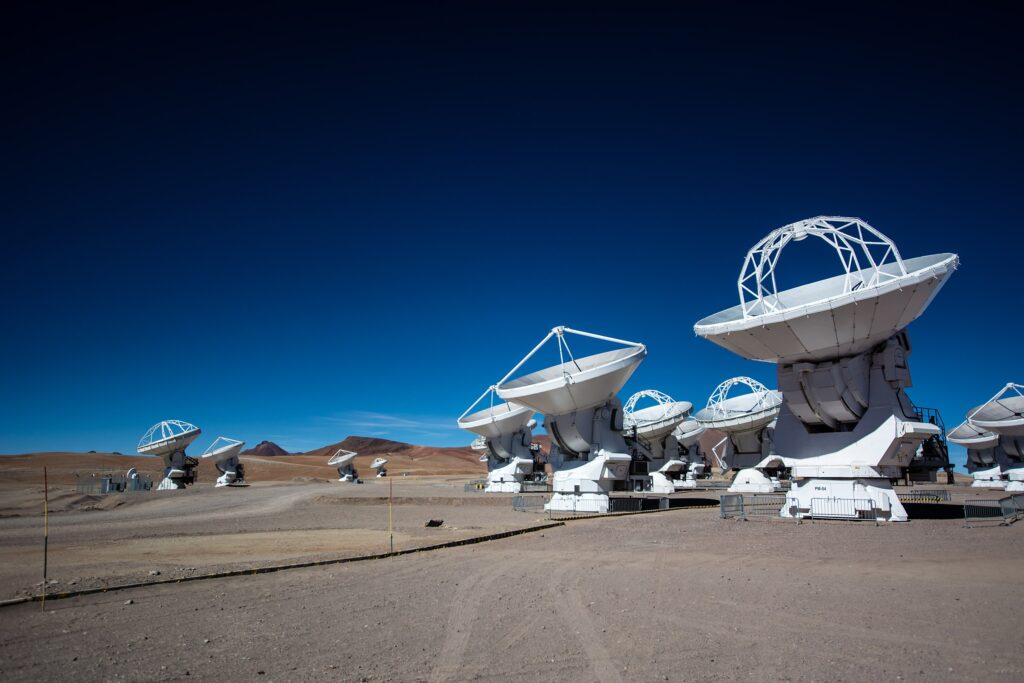
Fact 6: The Atacama Desert is being used to test Mars rovers
The Atacama’s extreme aridity, high-altitude terrain, and harsh environmental conditions make it an excellent analog environment for Mars due to similarities in terrain, temperature fluctuations, and lack of vegetation.
Scientists and engineers from various space agencies, research institutions, and private companies conduct field tests and trials in the Atacama Desert to evaluate the performance and durability of robotic systems in Mars-like conditions. These tests help validate technology, assess rover mobility and autonomy, and refine mission strategies for future Mars exploration missions.
Fact 7: The world’s largest swimming pool is in Chile
The world’s largest swimming pool, according to the Guinness World Records, is located in Algarrobo, Chile. Known as the Crystal Lagoon (Laguna Bahía), this enormous artificial lagoon spans an area of approximately 20 acres (8 hectares) and holds a staggering 250 million liters (66 million gallons) of seawater. The Crystal Lagoon was completed in 2006 as part of the San Alfonso del Mar resort complex and offers visitors a unique swimming experience with its pristine waters, sandy beaches, and recreational activities.
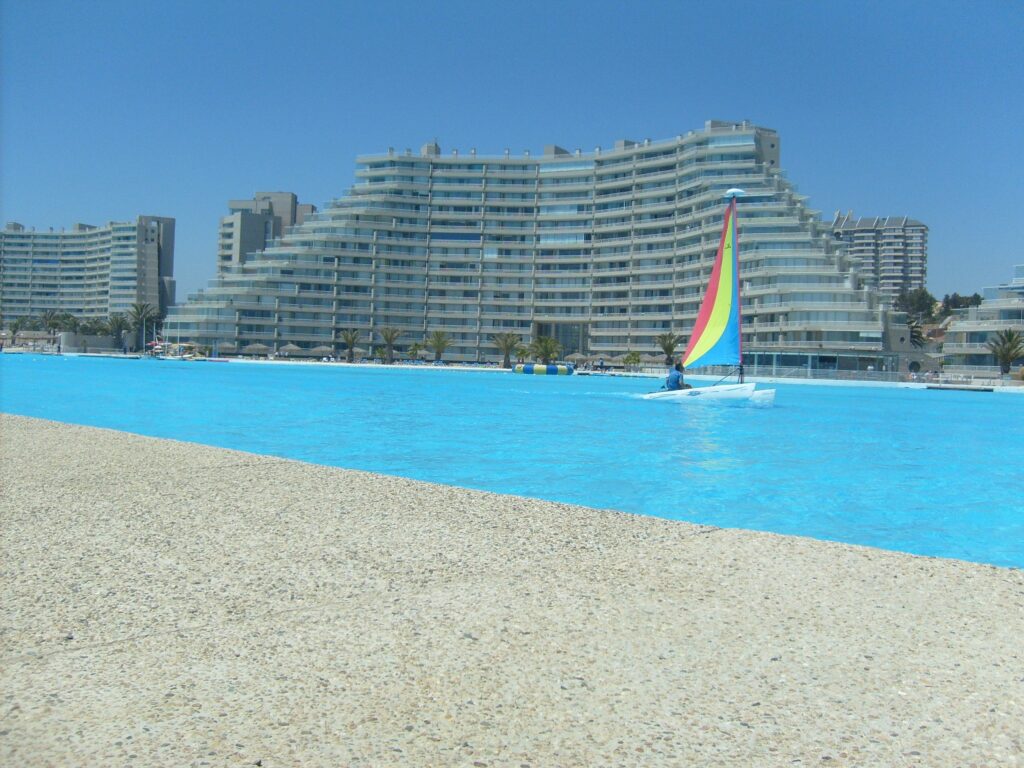
Fact 8: Easter Island is located in Chile and had a different name
Easter Island, known locally as Rapa Nui, is a remote island located in the southeastern Pacific Ocean and is part of Chile’s territory. The island is renowned for its iconic moai statues, massive stone figures carved by the indigenous Rapa Nui people centuries ago.
Historically, Easter Island was given its name by Dutch explorer Jacob Roggeveen, who arrived on the island on Easter Sunday in 1722. However, the island’s indigenous inhabitants refer to it as Rapa Nui, which reflects their Polynesian heritage. The island holds significant cultural and archaeological importance, and its mysterious moai statues continue to fascinate visitors from around the world.
Fact 9: Many species of penguins can be seen in Chile
Chile is home to various species of penguins, and several regions along its coastline provide habitats for these fascinating birds. Some of the most notable locations for observing penguins in Chile include:
- Humboldt Penguin National Reserve: Located in northern Chile near the city of La Serena, this reserve is dedicated to the conservation of the Humboldt penguin, a species endemic to the coasts of Chile and Peru. Visitors can observe Humboldt penguins in their natural habitat and learn about efforts to protect this endangered species.
- Chiloé Island: Situated off the coast of southern Chile, Chiloé Island is known for its diverse wildlife, including Magellanic and Humboldt penguins. Visitors can take boat tours to nearby islands and observe penguin colonies nesting along the rugged coastline.
- Tierra del Fuego: The southernmost region of Chile, including areas such as Punta Arenas and the Strait of Magellan, is home to colonies of Magellanic penguins. Visitors can embark on boat tours or visit nearby islands to see these charismatic birds in their natural environment.
- Patagonia: The coastal regions of Chilean Patagonia, including Torres del Paine National Park and the Strait of Magellan, are frequented by various species of penguins, including Magellanic, Humboldt, and even King penguins. Wildlife enthusiasts can explore these remote areas and encounter penguin colonies along the rugged coastline.
Note: If you are planning a trip, find out if you need an International Driver’s License in Chile to drive.
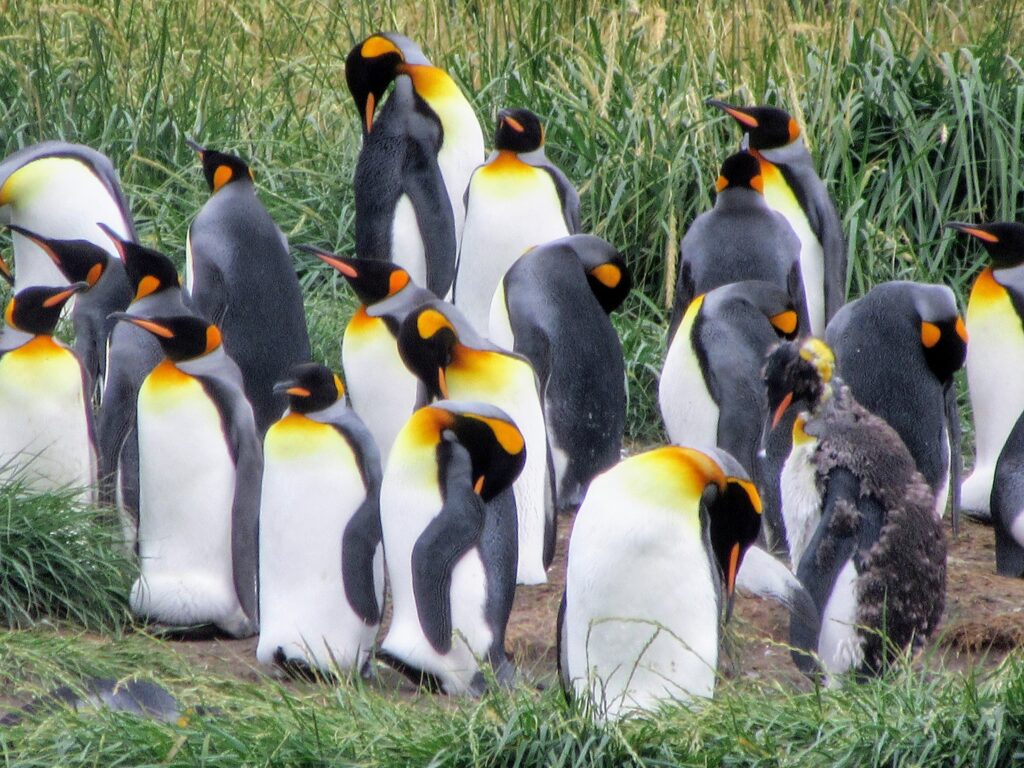
Fact 10: Chile has 5 UNESCO World Heritage sites
Chile is home to five UNESCO World Heritage sites, recognized for their outstanding cultural and natural significance. These sites showcase Chile’s diverse heritage and natural beauty and attract visitors from around the world. The five UNESCO World Heritage sites in Chile are:
- Rapa Nui National Park (Easter Island): Located in the southeastern Pacific Ocean, Easter Island, also known as Rapa Nui, is renowned for its monumental moai statues and ancient archaeological sites. Rapa Nui National Park preserves the island’s cultural heritage and serves as a testament to the ingenuity and creativity of its indigenous inhabitants.
- Historic Quarter of the Seaport City of Valparaíso: Situated on Chile’s central coast, Valparaíso is a vibrant port city known for its colorful hillside neighborhoods, historic architecture, and bohemian atmosphere. The Historic Quarter of Valparaíso is recognized for its unique urban landscape and cultural heritage, reflecting the city’s rich maritime history and cultural diversity.
- Humberstone and Santa Laura Saltpeter Works: Located in northern Chile’s Atacama Desert, the Humberstone and Santa Laura saltpeter works are former nitrate mining towns that flourished during the late 19th and early 20th centuries. These well-preserved industrial sites provide insights into Chile’s mining history and the social and economic impact of the nitrate industry on the region.
- Churches of Chiloé: Spread across Chile’s Chiloé Archipelago in southern Chile, the Churches of Chiloé are a collection of 16 wooden churches built by Jesuit and Franciscan missionaries during the 17th and 18th centuries. These churches exhibit a unique blend of European and indigenous architectural styles and are recognized for their cultural and historical significance.
- Sewell Mining Town: Located in the Andes Mountains of central Chile, Sewell is a former copper mining town that operated from the early 20th century until the mid-20th century. The town’s well-preserved urban layout and industrial infrastructure provide insights into Chile’s mining history and the lives of the workers who lived and worked there.

Published April 05, 2024 • 9m to read

